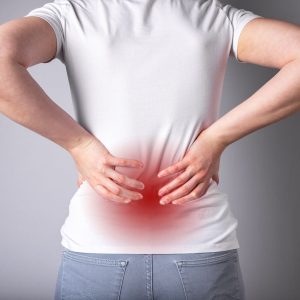Embracing Traditional Chinese Medicine: The Healing Power of TCM Tuina, Moxibustion, and Acupuncture
- G&G TCM
Embracing Traditional Chinese Medicine: The Healing Power of TCM Tuina, Moxibustion, and Acupuncture
In the realm of holistic health, Traditional Chinese Medicine (TCM) holds a venerable position, offering a rich tapestry of treatments that have been nurtured over millennia. Among its most celebrated practices are TCM Tuina (massage), moxibustion, and acupuncture. These treatments, steeped in ancient wisdom, offer a unique approach to healing, focusing not just on the symptoms but on the root cause of ailments. This article delves into the essence of these practices, shedding light on their benefits, techniques, and the holistic philosophy that underpins them.
TCM Tuina: A Holistic Approach to Massage
TCM Tuina is more than just a conventional massage; it’s a comprehensive healing technique that incorporates the principles of TCM to restore balance and harmony within the body. Unlike Western massage therapies that primarily focus on relaxation and muscle tension, Tuina targets the body’s meridians and acupuncture points to promote the flow of Qi (energy) and blood.
Techniques and Applications: Tuina employs a variety of techniques such as kneading, tapping, and pressing, tailored to the individual’s needs. It’s particularly effective for treating chronic pain, musculoskeletal conditions, and stress-related disorders. By stimulating specific points, Tuina seeks to enhance bodily functions, boost the immune system, and facilitate emotional balance.

Moxibustion: The Warmth That Heals
Moxibustion is a therapeutic practice that involves burning dried mugwort (moxa) on or near the skin’s surface at acupuncture points. This technique is used to warm regions and meridian points with the intention of stimulating circulation through the points and inducing a smoother flow of blood and Qi.
Benefits and Practices: The warmth from moxibustion penetrates deeply into the muscles, providing relief from cold and stagnant conditions. It’s renowned for its effectiveness in treating arthritis, digestive issues, and reproductive disorders. Moxibustion also strengthens the blood, stimulates the flow of Qi, and maintains general health. The practice can vary from direct (placing moxa directly on the skin) to indirect (holding it near the skin), depending on the condition being treated.
Acupuncture: Pinpointing Health
Acupuncture, one of the most widely recognized pillars of TCM, involves the insertion of fine needles into specific points on the body. This practice is grounded in the concept of achieving health by balancing the body’s Qi. It’s a method that transcends mere physical healing, touching on emotional and mental wellness too.
Techniques and Efficacy: The precise locations for needle insertion are determined based on a thorough assessment of the patient’s Qi flow, using diagnostic methods unique to TCM. Acupuncture is effective in treating a wide range of conditions, including chronic pain, insomnia, depression, and various digestive ailments. It works by stimulating the body’s natural healing mechanisms, reducing inflammation, and improving the function of multiple organ systems.

The Holistic Philosophy of TCM
The underlying philosophy of TCM is the concept of balance and harmony between the opposing forces of Yin and Yang, and the flow of Qi through the body’s meridians. Health, in TCM, is a state of balance where Qi flows freely. Illness arises from blockages or imbalances in this flow, and TCM treatments aim to restore equilibrium.
Integrating TCM in Modern Healthcare: Incorporating TCM practices like Tuina, moxibustion, and acupuncture into modern healthcare offers a holistic alternative or complement to conventional medical treatments. These practices provide a comprehensive approach to health, recognizing the interconnection between mind, body, and spirit, and emphasizing the body’s inherent ability to heal itself.
Conclusion
TCM’s holistic practices of Tuina, moxibustion, and acupuncture represent a profound understanding of human health and wellness. By addressing the root causes of ailments and promoting the flow of Qi, these therapies offer a path to holistic healing that is as relevant today as it was thousands of years ago. As more individuals seek out alternative and integrative approaches to health, the ancient wisdom of TCM continues to find new resonance, offering a gentle yet powerful way to achieve balance and wellness in our modern world.
Check out: Singapore Chinatown TCM Clinic (新加坡中医诊所)

